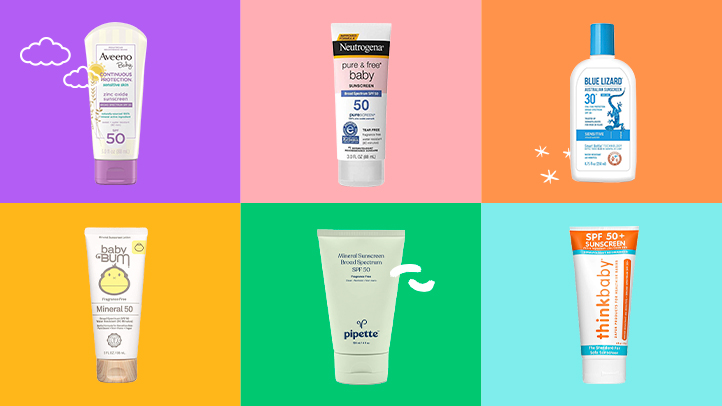Everything You Need to Know About Baby Sunscreen
Oh, hello there, fantastic parents! ?? Are you ready to take a dive into the sunny side of parenting? Well, buckle up because today we’re talking about a topic as bright as your baby’s future: baby sunscreen! Yes, you heard it right. We’re here to ensure that your little sunshine is all giggly and protected when the sun says hello!
We’ll embark on a delightful journey to learn why sunscreen is a must-have in your baby care arsenal, how to pick the best one for your mini-me, and share some super fun and practical tips that’ll make sun protection as easy as a breeze. Let’s get started and spread some sunshine!
Why Baby Sunscreen is a Big Deal
First things first, let’s talk about why baby sunscreen is the talk of the town. The skin of babies and toddlers is thinner and more sensitive than adult skin, making it more prone to sunburn and damage. Even a short stroll or a playful session in the park under the sun can expose their delicate skin to harmful UV rays.
Using the right sunscreen minimizes the risk of sunburn, prevents discomfort for your little one, and reduces the chances of long-term skin damage. Plus, remember, it’s not just about the sunny days. UV rays can be sneaky, still affecting the skin during overcast and cold days. So, it’s super important to make sunscreen a part of your daily routine, like singing lullabies or playing peek-a-boo!
Choosing the Right Sunscreen for Your Baby
Now, let’s get to the heart of it: picking the perfect baby sunscreen. With so many options on the shelves, it can be as tricky as changing a squirmy baby’s diaper. But don’t worry, we’ve got your back! Here’s what you need to look for:
- Broad-Spectrum Protection: This means the sunscreen protects against both UVA and UVB rays, super important for complete sun safety.
- SPF 30 or Higher: A Sun Protection Factor (SPF) of 30 or higher is what the experts rave about for effective sun defense.
- Water-resistant Formulas: Even if your little mermaid or merman isn’t taking a dip, a water-resistant sunscreen keeps protection in place against sweat and drool.
- Mineral Ingredients: Zinc oxide or titanium dioxide based sunscreens are the gentle giants that sit on top of the skin rather than being absorbed, which is perfect for sensitive baby skin.
Remember that while higher SPF numbers might seem like a better shield, no sunscreen offers 100% protection. Reapplying sunscreen is the real secret to keeping those UV rays at bay!
What to Avoid in Baby Sunscreens
Just as important as what to include is what to avoid when it comes to your baby’s sunscreen. Here’s a quick list of no-nos:
- Avoid sunscreens with oxybenzone or avobenzone, which can be irritable to the skin and cause allergic reactions.
- Steer clear of sunscreens with added fragrances, parabens, or phthalates which can be harsh on your darling’s skin.
- Skip the spray sunscreens, as they can be inhaled by the little ones, and it’s tough to ensure even coverage.
Sticking to our little guide will help you select a sunscreen that’s as gentle as a lullaby for your baby’s tender skin. Coming up next, we’ll share some easy-peasy tips for applying sunscreen and how to turn it into a fun bonding activity. Stay tuned for the part where we unravel those secrets to keeping your baby smiling under the sun! ?

5 Essential Things Parents Should Know About Preparing for Baby Sunscreen
Before you lovingly slather on that barrier of protection, make sure you’re fully prepared with these five helpful pointers:
1. Understand When to Start Using Sunscreen
Babies under six months should be kept out of direct sunlight as much as possible. Dress them in lightweight, long-sleeved clothing and wide-brimmed hats. For little ones older than six months, sunscreen becomes essential!
2. Patch Test Before Full Application
As with any new product, conduct a small patch test on your baby’s skin to check for reactions. Apply a small amount of sunscreen on the inside of your baby’s wrist and wait 24 hours. If there’s no reaction, you’re good to go!
3. Timing Is Key
Apply sunscreen generously about 15 to 30 minutes before you venture outdoors to give the skin plenty of time to absorb it. This helps assure that by the time you’re in the sun, your baby is already protected!
4. Don’t Forget The Hidden Spots
Sunscreen isn’t just for arms and legs! Apply it to often overlooked areas like the ears, the back of the neck, and the tops of feet and hands. For the face, dab it gently, avoiding the eyes.
5. Reapply, Reapply, Reapply
Reapplication is crucial, especially if you’re spending extended time outdoors. For babies, reapply sunscreen every two hours, or after swimming, sweating, or toweling off.
-Making Sunscreen Application Fun for Babies-
Sunscreen application can be a squeal of delight with some creativity. Turn it into a game: Who can rub in the sunscreen the fastest? Or sing a special ‘sunscreen song’ that you only sing during this time. Not only does it make for a joyful experience, but it also instills good sun safety habits early on.
Final Thoughts on Baby Sunscreen
Now that you’re equipped with all the sunny knowledge, you’re ready to shine! Remember, the best baby sunscreen is the one you use correctly and consistently. Ensure your little one is safe, so you can both enjoy the beautiful days outdoors with peace of mind. After all, with the right protection, the sun becomes less of a foe and more of a friend, beaming down on all those precious moments you share with your bundle of joy.
So, lather up and step out into the world, dear parents. Your baby’s skin is protected, and there are memory-making sunny days ahead. Embrace the rays responsibly, and let the laughter and play continue under the clear blue sky. Happy sun-blocking!
For more great articles please see here. For more information see here
Disclaimer
The articles available via our website provide general information only and we strongly urge readers to exercise caution and conduct their own thorough research and fact-checking. The information presented should not be taken as absolute truth, and, to the maximum extent permitted by law, we will not be held liable for any inaccuracies or errors in the content. It is essential for individuals to independently verify and validate the information before making any decisions or taking any actions based on the articles.




